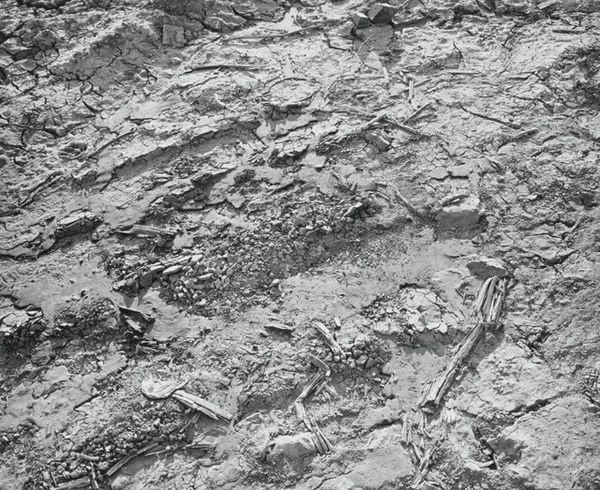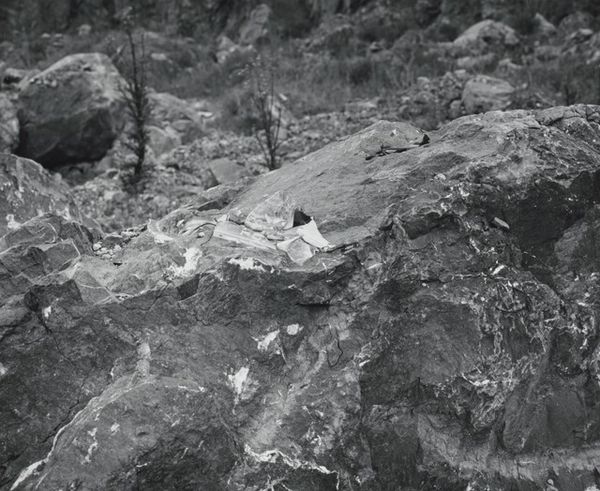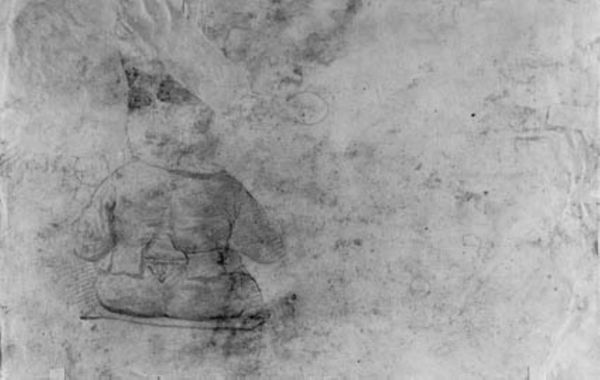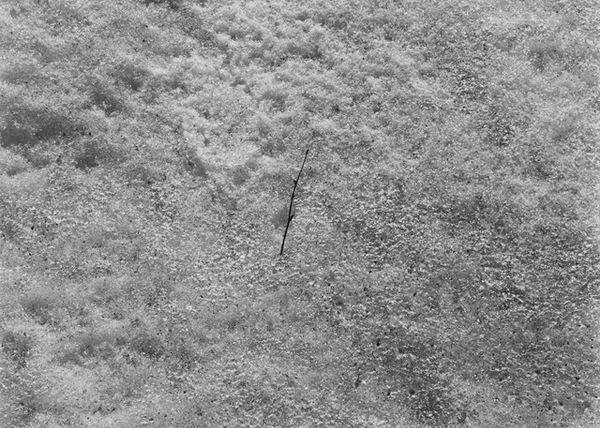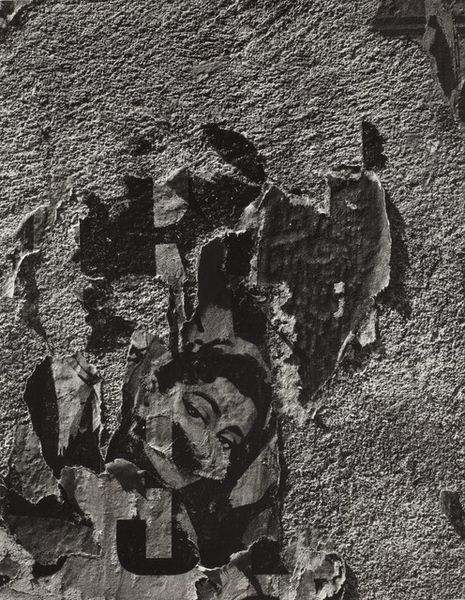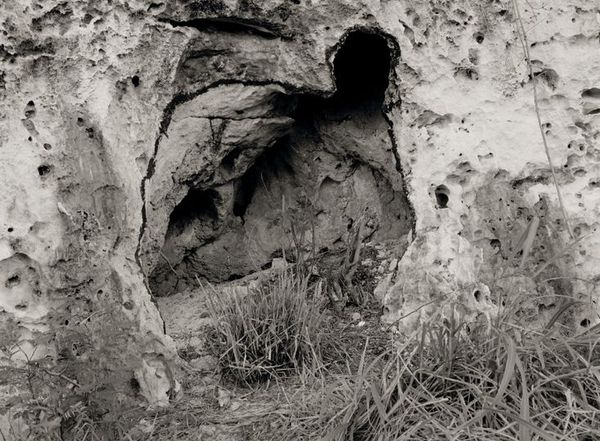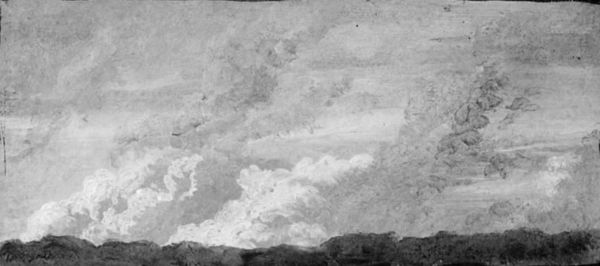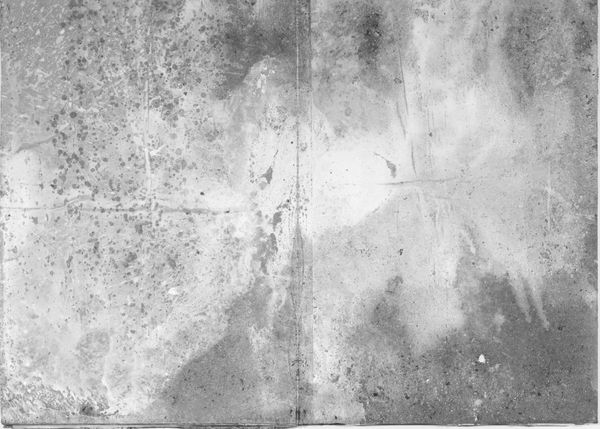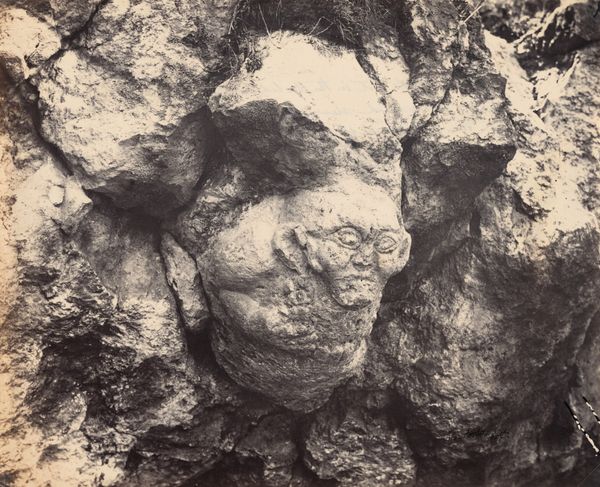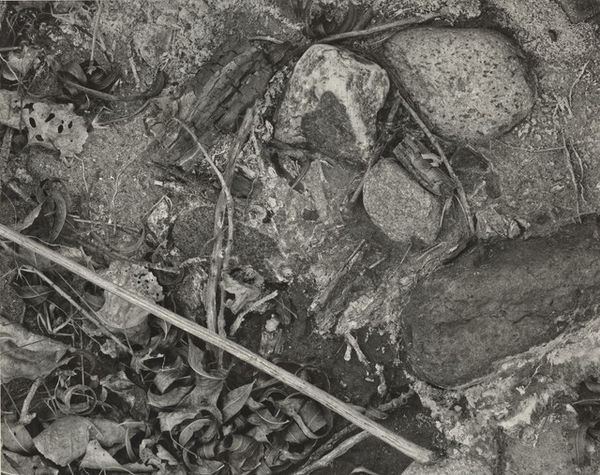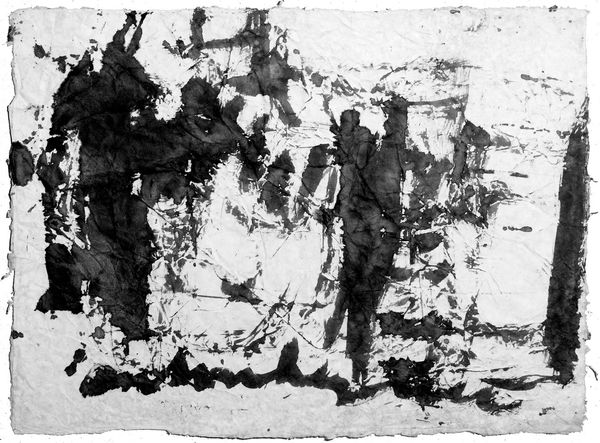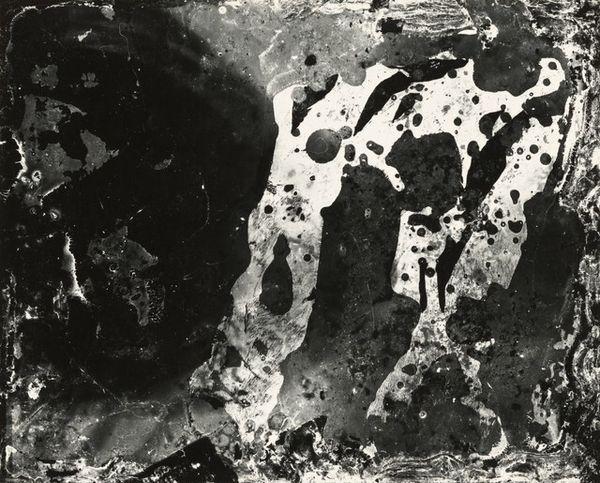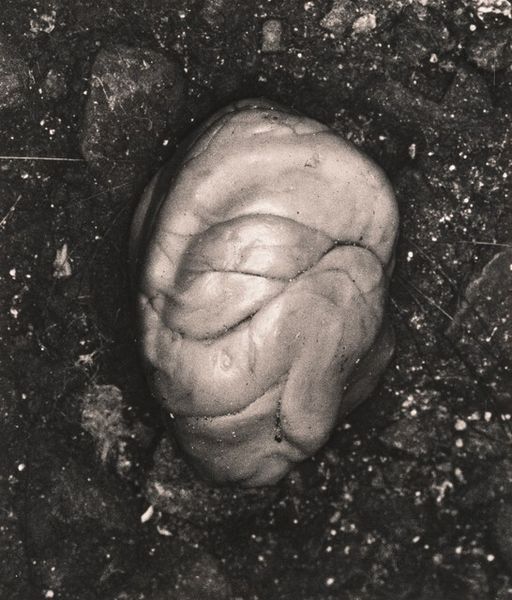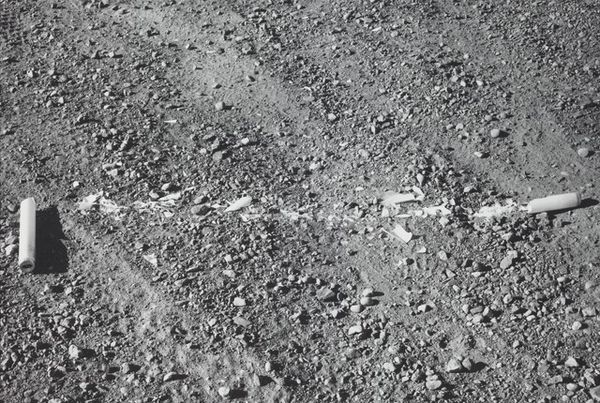
sculpture, site-specific, installation-art
#
african-art
#
natural shape and form
#
organic
#
textured
#
rugged
#
grainy texture
#
body-art
#
environmental-art
#
sculpture
#
site-specific
#
installation-art
#
gloomy
#
abstraction
#
texture
#
natural texture
#
organic texture
#
natural form
#
worn down
Copyright: Ana Mendieta,Fair Use
Editor: Ana Mendieta's "Maroya (Esculturas Rupestres)," created in 1981, presents a fascinating integration of sculpture, installation, and site-specificity. The grainy texture and organic forms give it a really ancient, almost prehistoric feeling. What do you see in this piece? Curator: I see Mendieta's powerful engagement with the politics of place and the body. Considering this work through a historical lens, it becomes clear that she's directly challenging the traditional, often male-dominated, narrative of art history. These aren't sculptures simply placed *on* the land, but rather carvings *into* the landscape itself. Do you notice how the form almost emerges from the rock? Editor: Yes, it’s like the rock birthed the form! How does her focus on site-specificity challenge traditional museum settings? Curator: Precisely! Site-specific art actively resists the neutrality claimed by museums. Mendieta is not presenting a portable object to be consumed, but rather an experience rooted in a specific geographical, and by extension, historical context. It demands we consider the land itself as a witness to history, including the histories of violence and displacement, especially poignant considering Mendieta’s own biography as a Cuban exile. It repositions art as something inseparable from its environment. Editor: That’s incredibly insightful. So, it's not just about the visual representation but about the act and the location, commenting on history and cultural narratives. Curator: Exactly. By carving into the rock, Mendieta is also engaging with ideas of permanence and ephemerality. The sculpture exists, yet it is subject to natural erosion. She’s playing with the illusion of enduring cultural presence while acknowledging its fragility. It forces us to question whose stories endure and who gets to tell them. Editor: I never considered the intentional ephemerality. It makes you think about who shapes those cultural narratives over time and whose voices are lost. Thanks so much for helping me think about all of that. Curator: It’s a pleasure. It's in these critical analyses and reinterpretations that art continually evolves, revealing new layers of meaning and prompting us to engage more deeply with the world around us.
Comments
No comments
Be the first to comment and join the conversation on the ultimate creative platform.
